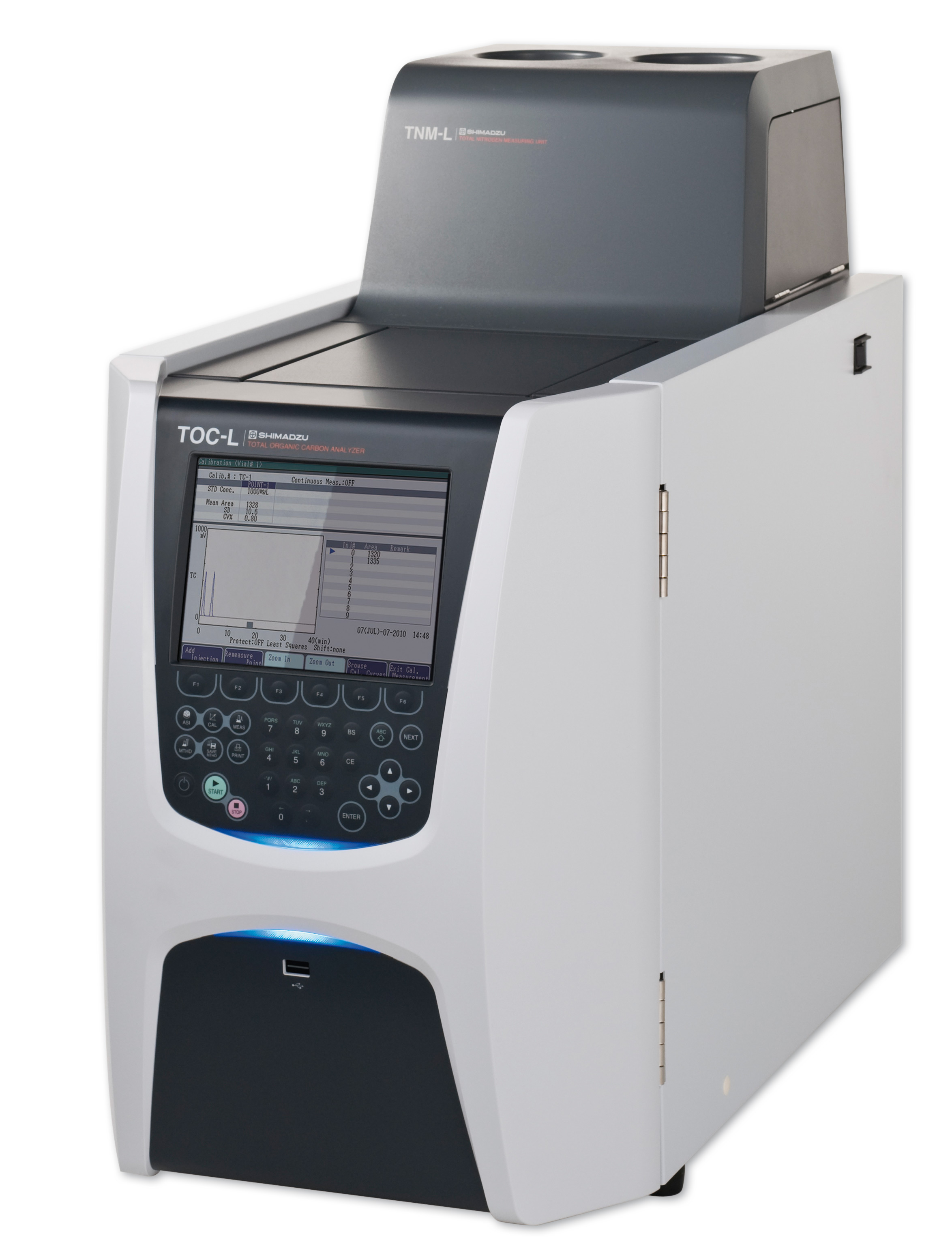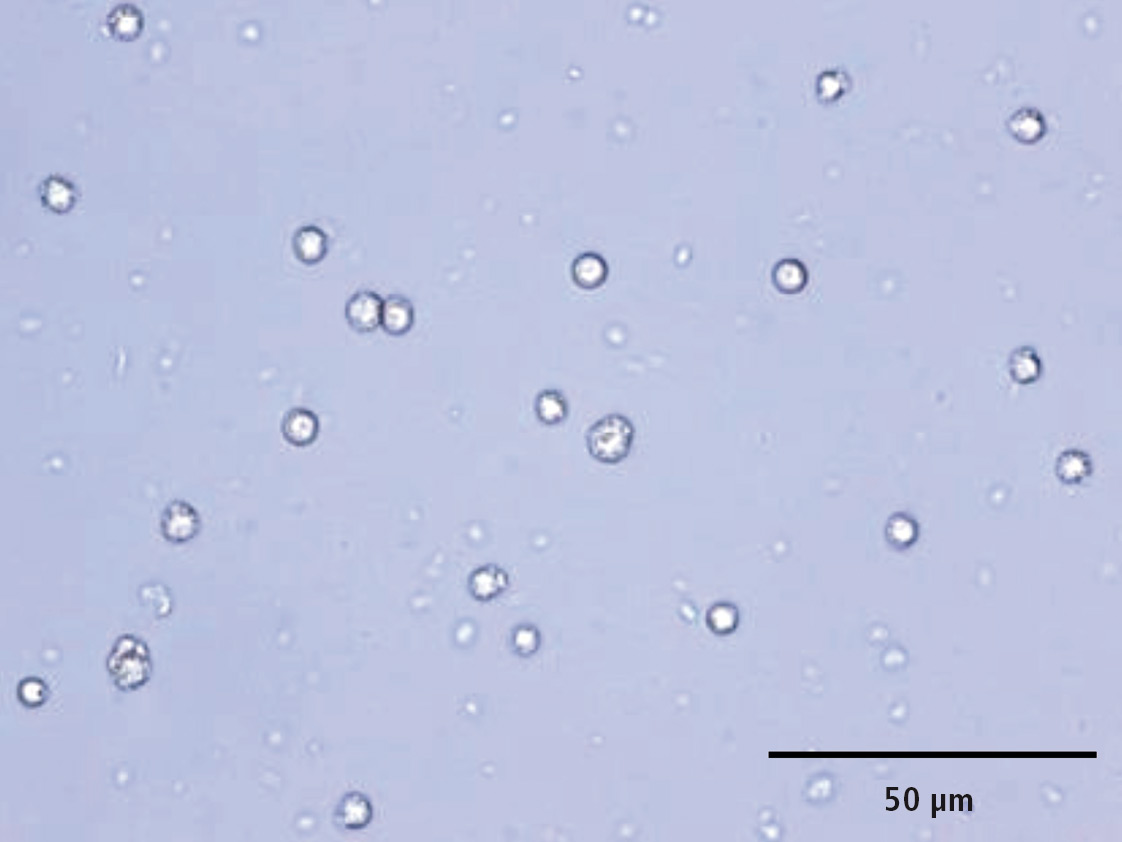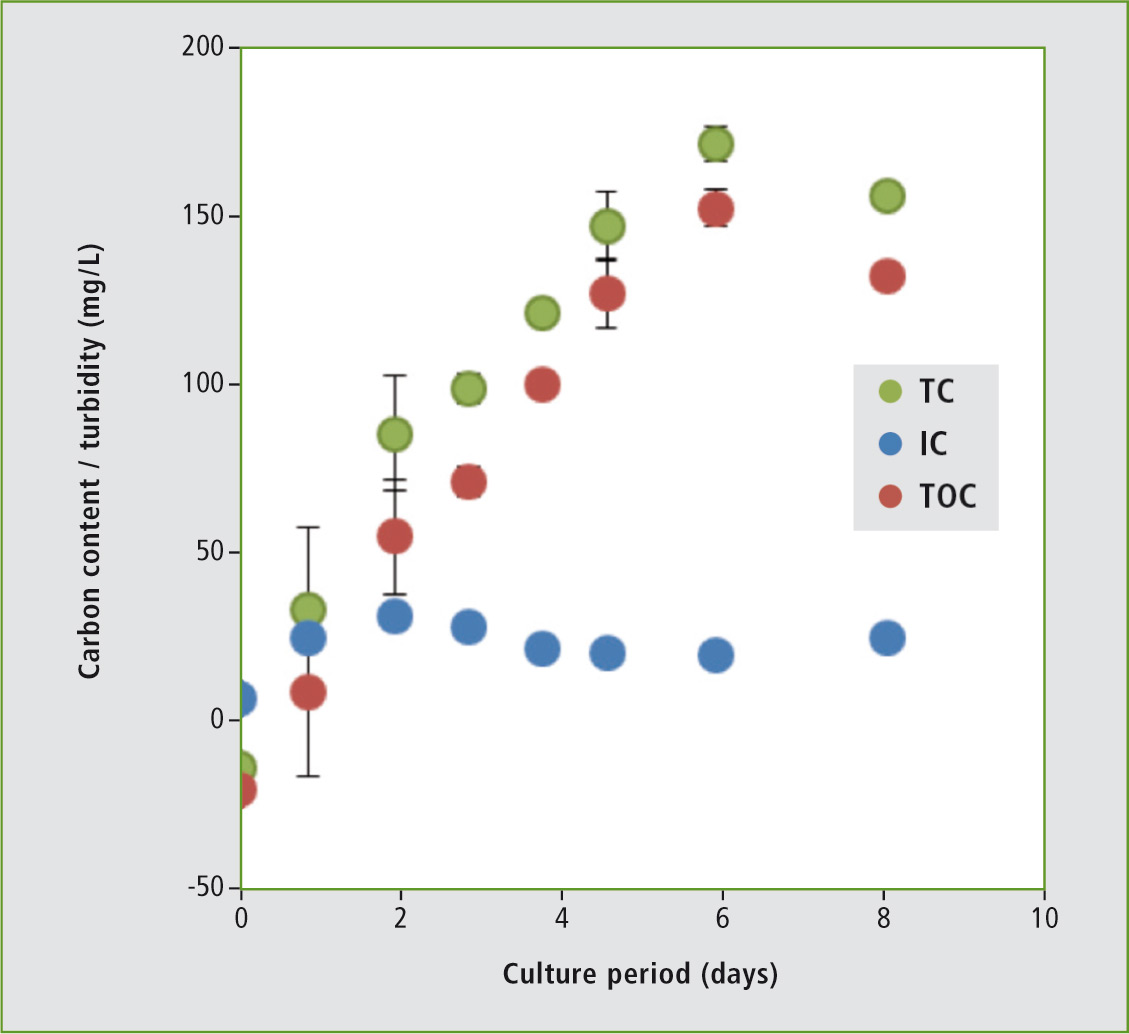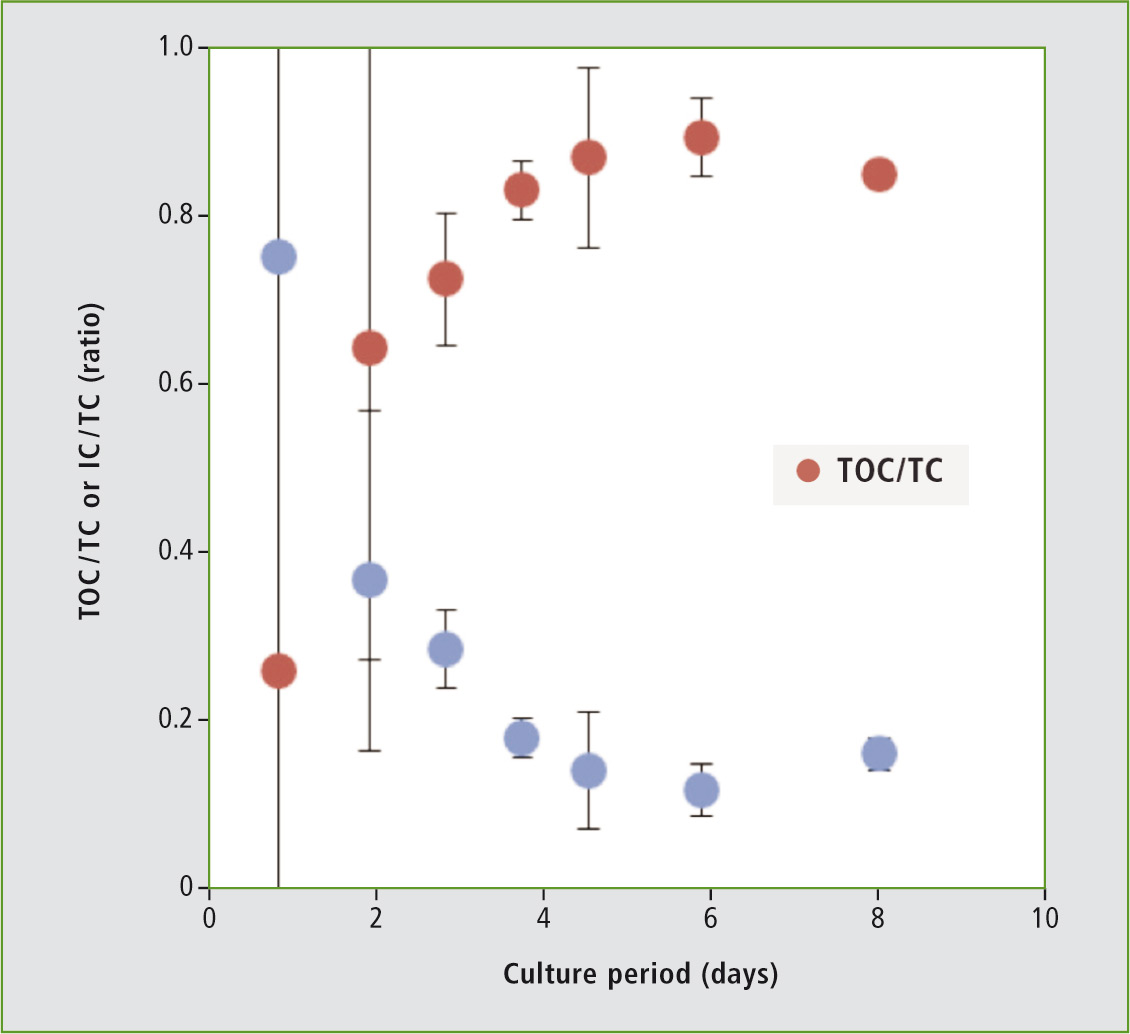Biomass fuel: can algae make the wheels go round?
Monitoring of algae growth by TOC measurement
Global warming due to excessive use of fossil fuels has prompted and accelerated the search for alternative fuels. Among the more interesting alternatives is biomass fuel, which has attracted considerable attention.
 Abbildung 4: TOC-L-Gesamtkohlenstoffanalysator plus TNM-L-Gesamtstickstoffeinheit
Abbildung 4: TOC-L-Gesamtkohlenstoffanalysator plus TNM-L-Gesamtstickstoffeinheit
Microalgae can be used for the production of oil without competing with food production. Compared with other biofuels, its productivity per unit time and area is high, while arable land selection possibilities are immense. As for the practical use of microalgal biomass, various studies have been conducted at each stage of its production, including stock selection and breeding, cultivation, harvesting, oil extraction and purification.
The Shimadzu TOC-L series combustion-type total organic carbon (TOC) analyzer with its powerful organic substance oxidation features enables complete oxidization and measurement of samples such as microalgae cell culture suspensions.
In this unique application the TOC-L is used to track the growth process of microalgae by measuring the TOC content directly in a suspended culture of microalgae cells. No pretreatment is necessary.
The data presented are provided by Prof. Yoshihiro Shiraiwa’s laboratory at the University of Tsukuba, Japan.
Analytical method
The microalgae was cultured for eight days. As of the first day, TOC measurement was conducted once per day for both sample 1 (consisting of a culture along with suspended microalgae cells) and sample 2 (with a culture only obtained by removing the microalgae cells from sample 1 through centrifugal sedimentation). Based on the difference in organic carbon (TOC) between sample 1 and sample 2, the value of TOC present for the organic matter of the microalgae cells was then obtained. Further, the turbidity of sample 1 was measured and the value used as an index of cell mass. A microscopic image of the microalgae cells of sample 1 is shown in figure 1.
 Figure 1: A microscopic image of the microalgae cells of sample 1
Figure 1: A microscopic image of the microalgae cells of sample 1
Measurement Conditions
- Analyzer: Shimadzu TOC-LCPH total organic carbon analyzer
- Catalyst: Standard catalyst
- Measurement item: TOC (TC-IC)
- Calibration curve: 1-point calibration curve using 1,000 mg/L potassium hydrogen phthalate aqueous solution
- Sample 1: Culture solution containing suspended microalgae cells
- Sample 2: Culture solution with microalgae cells removed using centrifugal sedimentation Water sampling method: Sample 1 water was sampled while stirring with a magnetic stirrer.
Measurement results
Figure 2 shows the measurement results for the total carbon (TC), total organic carbon (TOC) and inorganic carbon (IC) associated with the cell mass during the culture period. The ratios of TOC to IC in the microalgae cells are also shown in figure 3. From these results, it was possible to obtain information on increase and decrease of TC, IC and TOC values associated with the microalgae cells throughout the culture process.
 Figure 2: Changes in TC, IC, TOC quantity in microalgae cells (conversion value per turbidity unit)
Figure 2: Changes in TC, IC, TOC quantity in microalgae cells (conversion value per turbidity unit)
 Figure 3: Changes in TOC/TC and IC/TC in microalgae cells
Figure 3: Changes in TOC/TC and IC/TC in microalgae cells
One essential element in the practical realization of microalgal biomass is to establish the culture conditions, and this study demonstrates that information regarding the carbon balance can be obtained using a TOC analyzer.
Shimadzu TOC-L series total organic carbon analyzer
The TOC-L can be used to conduct the following types of measurements:
- Total carbon and nitrogen content in water, quantity dissolved, quantity suspended
- Total carbon, organic carbon, inorganic carbon in water
- Dissolved CO2 in water
The TOC-L can therefore be used in applications of microalgae research such as:
- Obtaining information on the physiological state and properties of microalgae
- Understanding quantitatively the carbon and nitrogen balance in the culture system.
The TOC-L can be used to conduct measurements using very small sample volumes in the range of 10 to 20 mL, making it suitable for laboratory-scale studies.
The TNM-L total nitrogen unit option is required for nitrogen (TN) measurement. In addition, filtering and centrifugal separation etc. are required for separate measurement of samples in the dissolved and suspended state.